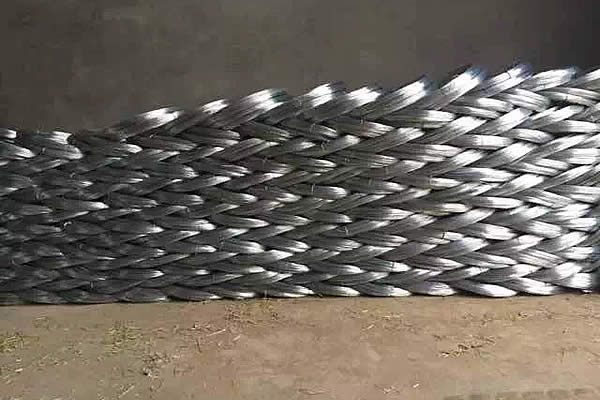 TEL:
+86-13102802206
TEL:
+86-13102802206
 Email:
fencenetting@china.com
Email:
fencenetting@china.com
 Language
Language
 TEL:
+86-13102802206
TEL:
+86-13102802206
 Email:
fencenetting@china.com
Email:
fencenetting@china.com
 Language
Language


Structural Design of Gabion Walls
Gabion walls are structures made of wire mesh containers filled with rock, concrete, or other material, used extensively in civil engineering for various applications. Their design and construction techniques have gained popularity due to their environmental benefits, aesthetic qualities, and structural functionality. This article aims to provide an overview of gabion wall structural design, focusing on key elements such as material selection, load considerations, drainage, and stability.
Understanding Gabion Walls
Gabion walls are typically used for retaining soil, controlling erosion, and improving landscape aesthetics. The basic unit of a gabion wall consists of a rectangular wire mesh basket filled with stones, which are either locally sourced or commercially manufactured. The flexibility of this type of wall allows it to adapt to shifting soil and structural loads, offering a durable solution for various engineering challenges.
Material Selection
The choice of materials for gabion walls is critical for their effectiveness and longevity. The wire mesh is usually made from galvanized steel or PVC-coated steel, which helps resist corrosion and extend the lifespan of the structure. The rock or fill material used can vary based on the local availability and desired appearance. Larger rocks are preferred for stability, while smaller aggregates can be used for aesthetic purposes or where space is limited.
The design also prioritizes the selection of geosynthetic materials in conjunction with gabions. Geotextiles can be used to enhance drainage and soil retention, further improving the performance of gabion walls while minimizing soil erosion.
Load Considerations
One of the primary aspects of structural design is understanding the loads that would act on a gabion wall. These loads include gravitational forces from the retained soil, hydrostatic pressure from water, and dynamic loads due to seismic or wind forces.

In designing a gabion wall, it is essential to conduct a thorough analysis of the site's characteristics, such as soil type, slope, and potential water flow. The wall's height and width must be determined to withstand the lateral soil pressures and any additional loads. Standard engineering practices will involve calculating factors such as the angle of repose, soil weight, and anticipated water levels to ensure the wall's stability and normal operating conditions.
Drainage and Erosion Control
Effective drainage is vital in gabion wall design, as water buildup behind the wall can significantly increase pressure and lead to potential failure. Therefore, incorporating drainage features such as weep holes or perforated pipes in the design is essential. These will help redirect excess water and relieve hydrostatic pressure.
Additionally, integrating erosion control measures, such as vegetation or geotextiles, at the base and backfill area of the gabion wall can further enhance its stability. Growth of plant life not only aids in soil retention but also improves the wall's overall aesthetic appeal.
Stability and Reinforcement
Stability is a crucial consideration in the design of gabion walls. The design must account for factors such as sliding, overturning, and settlement. To enhance the stability of a gabion wall, engineers may use additional features such as toe extensions or anchor walls, which provide a greater resisting force against lateral soil movement.
The wall's design may also include a sloping face or terracing to reduce pressure and increase overall stability. The inclination of the wall and appropriate reinforcement measures can also mitigate risks associated with seismic activities, ensuring that the structure can sustain dynamic loads.
Conclusion
The structural design of gabion walls encompasses a variety of considerations, from material selection and load calculations to drainage and stability measures. With their aesthetic value, environmental benefits, and adaptability to diverse engineering needs, gabion walls are gaining popularity in modern construction. Proper design and planning assure that these structures can effectively serve their purpose while minimizing maintenance costs and environmental impact. As engineering practices advance, gabion walls will likely continue to evolve, reinforcing their position as a valuable component of sustainable infrastructure.